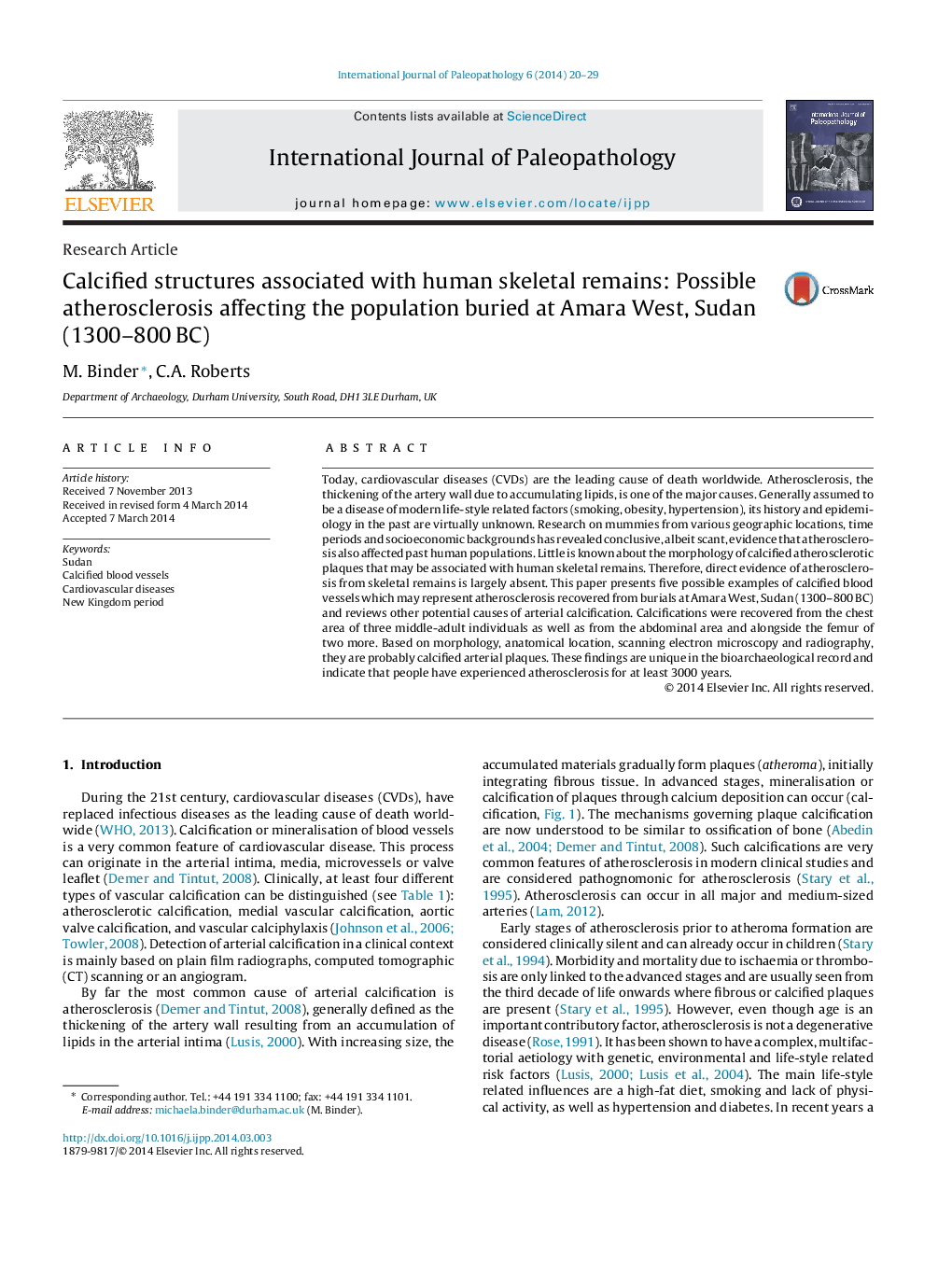| Article ID | Journal | Published Year | Pages | File Type |
|---|---|---|---|---|
| 101340 | International Journal of Paleopathology | 2014 | 10 Pages |
•Calcifications were recovered with skeletons from Amara West, Sudan (1300–800 BC).•The structures may be identified as calcified blood vessels.•The structures may result from calcification of atherosclerotic plaques.•The calcifications could be evidence of atherosclerosis in skeletal human remains.
Today, cardiovascular diseases (CVDs) are the leading cause of death worldwide. Atherosclerosis, the thickening of the artery wall due to accumulating lipids, is one of the major causes. Generally assumed to be a disease of modern life-style related factors (smoking, obesity, hypertension), its history and epidemiology in the past are virtually unknown. Research on mummies from various geographic locations, time periods and socioeconomic backgrounds has revealed conclusive, albeit scant, evidence that atherosclerosis also affected past human populations. Little is known about the morphology of calcified atherosclerotic plaques that may be associated with human skeletal remains. Therefore, direct evidence of atherosclerosis from skeletal remains is largely absent. This paper presents five possible examples of calcified blood vessels which may represent atherosclerosis recovered from burials at Amara West, Sudan (1300–800 BC) and reviews other potential causes of arterial calcification. Calcifications were recovered from the chest area of three middle-adult individuals as well as from the abdominal area and alongside the femur of two more. Based on morphology, anatomical location, scanning electron microscopy and radiography, they are probably calcified arterial plaques. These findings are unique in the bioarchaeological record and indicate that people have experienced atherosclerosis for at least 3000 years.
Graphical abstractFigure optionsDownload full-size imageDownload as PowerPoint slide
